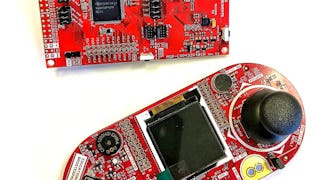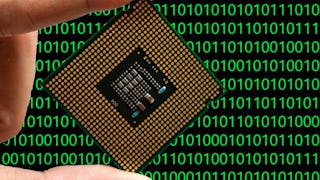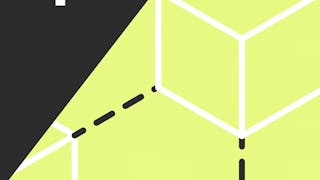Getting Started with BSP and Embedded C is a beginner-level course designed to help early embedded systems developers bridge the gap between hardware and code. Whether you're working with sensors, LEDs, or communication interfaces, success depends on your ability to configure and control hardware using well-structured Board Support Packages (BSPs). In this course, you'll learn to read hardware datasheets, write Embedded C routines to interface with peripherals, and architect reliable applications using layered BSP principles. Through short videos, hands-on labs, interactive coaching, and real-world case studies from IoT and automotive domains, you’ll gain practical experience in integrating GPIOs, timers, and UARTs in low-level embedded systems. By the end of this course, you’ll be able to build and debug simple hardware-backed applications with confidence—while laying the foundation for more advanced embedded development.



Recommended experience
Skills you'll gain
Details to know

Add to your LinkedIn profile
October 2025
See how employees at top companies are mastering in-demand skills

There are 3 modules in this course
In this foundational lesson, learners will explore what BSPs are, why they matter, and how they operate within embedded systems. They’ll examine BSP architecture, key components (like startup code, device drivers, and memory maps), and how BSPs abstract hardware complexity. Through real-world examples and guided walkthroughs, learners will gain the conceptual grounding needed to configure and use BSPs in practice.
What's included
3 videos2 readings1 assignment
This lesson focuses on applying Embedded C with BSPs to control peripherals like GPIOs, timers, and UARTs. Learners will write and analyze real code that drives basic hardware functions and use simulation tools or boards to observe behavior. They'll also examine how low-level register access and high-level abstractions differ and when to use each.
What's included
3 videos1 reading1 assignment
In the final lesson, learners will move from component-level code to full integration—tying BSP configuration, startup sequences, and application logic together. They’ll simulate or deploy an end-to-end embedded setup that uses multiple peripherals and structured BSP layers, reinforcing best practices and real-world adaptability.
What's included
4 videos1 reading3 assignments
Instructor

Offered by
Explore more from Software Development
 Status: Preview
Status: Preview
University of Colorado Boulder
 Status: Free Trial
Status: Free TrialEDUCBA
Why people choose Coursera for their career





Open new doors with Coursera Plus
Unlimited access to 10,000+ world-class courses, hands-on projects, and job-ready certificate programs - all included in your subscription
Advance your career with an online degree
Earn a degree from world-class universities - 100% online
Join over 3,400 global companies that choose Coursera for Business
Upskill your employees to excel in the digital economy
Frequently asked questions
To access the course materials, assignments and to earn a Certificate, you will need to purchase the Certificate experience when you enroll in a course. You can try a Free Trial instead, or apply for Financial Aid. The course may offer 'Full Course, No Certificate' instead. This option lets you see all course materials, submit required assessments, and get a final grade. This also means that you will not be able to purchase a Certificate experience.
When you purchase a Certificate you get access to all course materials, including graded assignments. Upon completing the course, your electronic Certificate will be added to your Accomplishments page - from there, you can print your Certificate or add it to your LinkedIn profile.
Yes. In select learning programs, you can apply for financial aid or a scholarship if you can’t afford the enrollment fee. If fin aid or scholarship is available for your learning program selection, you’ll find a link to apply on the description page.
More questions
Financial aid available,
¹ Some assignments in this course are AI-graded. For these assignments, your data will be used in accordance with Coursera's Privacy Notice.


